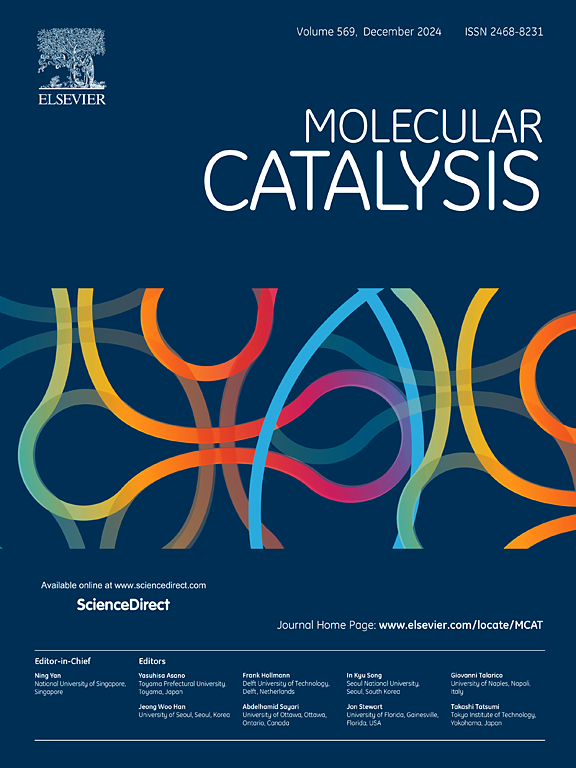Influence of the Au-Ag morphology in the electrocatalytic reduction of organic halides
IF 3.9
2区 化学
Q2 CHEMISTRY, PHYSICAL
引用次数: 0
Abstract
Bimetallic gold-silver nanoparticles (NPs) have unique chemical and physical properties due to the synergistic effect of the two metals. From a catalytic point of view, supported AuAg NPs possess different properties depending on their structure, e.g. random alloy or core-shell. Herein, we synthesised bimetallic Au-Ag nanoparticles using a sol-immobilisation method to obtain different bimetallic structures. These colloids were then deposited on high heat-treated (HHT) carbon nanofibers characterised through high-resolution transmission microscopy coupled with energy-dispersive X-ray spectroscopy (HRTEM-EDX), and cyclic voltammetry (CV). Combining these complementary techniques revealed the formation of a random alloy, AuAg, and two core-shell structures, Ag@Au and Au@Ag. In the first case, the structure presents a silver shell and a gold core, while the second possesses a silver core covered in gold. Finally, the catalysts were tested in the electrocatalytic reduction of organic halides, i.e. acetobromo-α-D-glucose and benzyl bromide, two model well-studied molecules, and compared with the catalytic performance of the respective monometallic counterparts. For both the substrates the bimetallic NPs showed an increased reactivity compared to the monometallic counterparts, underlining the synergistic effect of the two metals. More importantly, the different structures assumed by the NPs had an impact on the catalytic activity. Indeed, the Ag@Au/HHT catalyst showed the lowest reduction potential for the reduction of acetobromo-α-D-glucose, while for benzyl bromide reduction the random alloy results to be the best employed catalyst.

求助全文
约1分钟内获得全文
求助全文
来源期刊

Molecular Catalysis
Chemical Engineering-Process Chemistry and Technology
CiteScore
6.90
自引率
10.90%
发文量
700
审稿时长
40 days
期刊介绍:
Molecular Catalysis publishes full papers that are original, rigorous, and scholarly contributions examining the molecular and atomic aspects of catalytic activation and reaction mechanisms. The fields covered are:
Heterogeneous catalysis including immobilized molecular catalysts
Homogeneous catalysis including organocatalysis, organometallic catalysis and biocatalysis
Photo- and electrochemistry
Theoretical aspects of catalysis analyzed by computational methods
 求助内容:
求助内容: 应助结果提醒方式:
应助结果提醒方式:


